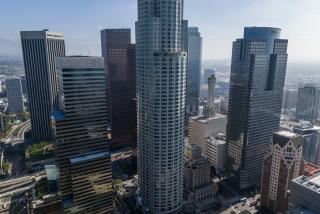ICONS
First it was surfboards, then sailboats, now even the lifeguard tower, a Southern California landmark, is going fiberglass. In the past three years, the Techniglass Tower, developed by designer John Rasher, has replaced 35 of Los Angeles Countyâs 155 guard stands.
With its 8-by-8-square deck and 8-foot-high pagoda-like ceiling, itâs a far cry from the original--the white, wide chair on 7-foot-high stilts introduced in the 1920s. But donât let nostalgia get you down; these classics were deemed âpenalty boxesâ by lifeguards. âSummer days, youâd burn up like fried fish,â remembers Dave Heiser, who guarded Santa Monica beaches from â46 to â60.
The first enclosed towers were built in the late â30s, and after World War II, the two-story tower, with a ladder up the side and an area beneath to store rescue equipment, began to dot the beaches. This tower reigned until the â60s, when the current version--sitting on a platform 12 feet off the sand, with skids to facilitate moving it in the game of tag with wind, surf and tides--was borne. Then came the plasticized â80s. âWe went to fiberglass because of the tremendous graffiti problem,â says Don Rohrer, chief lifeguard for the county. Rasherâs creation âis virtually graffiti-proof.â
Unfortunately, fiberglass comes with a hefty price tag--about $15,000. Right now, that kind of funding isnât available. And there is also the odor problem--it takes about a year for the fiberglass to lose the smell that has lifeguards complaining. But, Rohrer says, âWeâll continue to work on tower design, maybe make it out of more wood than glass, with new linear polyurethane paint so that graffiti can be removed easily with solvents.â
Meanwhile, Rasherâs fiberglass towers are moving inland. âI understand some are being manufactured for the state prison system,â Rohrer says.
More to Read
Sign up for Essential California
The most important California stories and recommendations in your inbox every morning.
You may occasionally receive promotional content from the Los Angeles Times.










